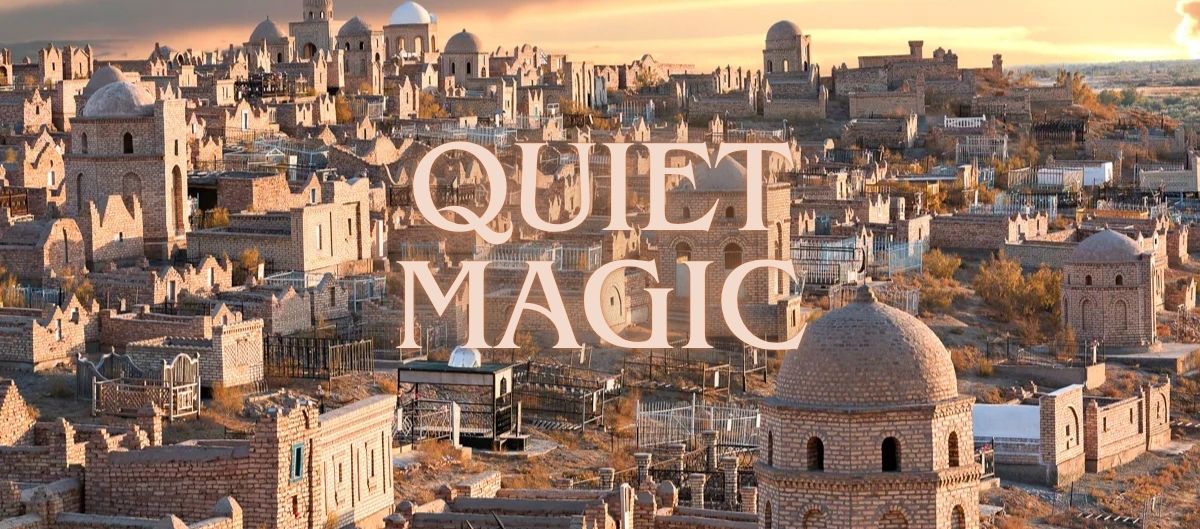The Quiet Magic of The Turkmen: Nomads of the Steppe

Nestled in Uzbekistan’s remote northwest, Urgench might not be the first name that jumps out on a Silk Road itinerary — but you don’t want to miss this gateway to one of Central Asia’s most fascinating cultural crossroads. From the grand courtyard houses of Ulli Khovli to the enduring traditions of the Turkmen people, this region is full of quiet magic waiting to be explored.

Founded in the 19th century to replace the once-great Konye-Urgench (now across the border in Turkmenistan), Urgench has since grown into a tidy, Soviet-planned city with wide boulevards, leafy parks, and a gentle pace of life. I

It serves as a base for discovering Khorezm’s ancient legacy — a place where ancient Persia, nomadic Turkic cultures, and Islamic civilization all left their mark.

Tip: Fly into Urgench International Airport — it’s small, efficient, and your launch pad to the region’s hidden gems.


If you want a glimpse of what elite life in Central Asia once looked like, Ulli Khovli, (also spelled Ulli Hovli) is the architectural treasure you’re after.


These traditional Khorezmian courtyard homes — “Ulli Khovli” means “large house” in Uzbek — are a perfect blend of practicality and elegance.

With thick mud-brick walls, shady verandas, and richly carved wooden columns, they’re built to handle the region’s desert climate while serving as family compounds, social centers, and symbols of wealth.

These curtained seating area platforms serve as gathering places for meals and conversation.

Some of the best-preserved examples can be seen in Khiva, but similar styles exist in the older parts of Urgench and the surrounding villages. If you’re lucky enough to visit one still inhabited by locals, prepare for warm welcomes, delicious food and bottomless cups of green tea.



Crossing into western Uzbekistan brings you into contact with one of Central Asia’s most unique ethnic groups: the Turkmen.
Though Turkmenistan lies just across the Amu Darya River, many Turkmen people live in border regions like Khorezm, maintaining their distinct tribal customs, vibrant clothing, and legendary carpet-weaving traditions. Historically nomadic, Turkmen tribes such as the Tekke, Yomut, and Ersary roamed this land for centuries with their herds and yurts.



Even today, you’ll notice their influence — in the round wool hats worn by elders, in the deep red textiles for sale at local markets, and in the strong oral storytelling traditions still alive in rural communities.
Craft and Art: Some of the finest carpets and ceramics in the world, each with its own tribal design motif.

Lifestyle: Once herders of sheep and camels, many now farm or work in towns but keep strong ties to tribal identity.
Music & Stories: Listen for the sound of the dutar (two-stringed lute) or a bagshy reciting epic Turkmen tales.
If you’re visiting in spring or fall, ask around about folk festivals or weddings in nearby villages — they often welcome respectful outsiders and showcase dance, music, and hospitality like nowhere else.
Urgench and its surroundings aren’t just a stepping stone to Khiva — they’re a living, breathing link to the Silk Road’s multicultural past. From architectural wonders like the Ulli Khovli to the rich cultural legacy of the Turkmen people, this region offers the kind of immersive travel experience that I seek out in all my travels.
Take your time here. Sip tea in a shady courtyard. Talk to locals. Get lost in a bazaar. And remember — sometimes the most rewarding places are the ones tourists tend to overlook.
Related Posts
Tashkent: A Vibrant Clash of Exotic Culture and Commerce!
The term “Silk Road” evokes images of camel caravans crossing deserts, laden with silk, spices, …
June 5, 2025Rio de Janeiro and the Girl from Ipanema: Where Music Meets the Sea
Rio de Janeiro is more than a city—it’s sun-soaked poetry. From the iconic Christ the …
May 3, 2025

Leave A Comment